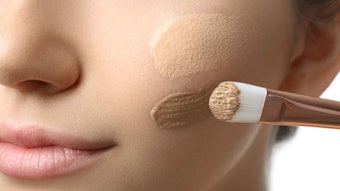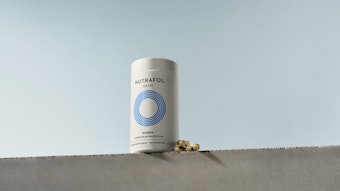
Skin rejuvenation can be achieved by reducing a fatigued look; i.e., smoothing wrinkles, lightening dark spots, shedding persistently attached dead cells and removing oxidized sebum. Once superficial skin layers are eliminated, the skin beneath begins to produce shielding stratum corneum cells, and “fresh” cells come to the skin’s surface, glowing and untouched. This skin purification achieves its goal of renewal, resulting in a visible difference. The process also has the benefit of increasing capillary circulation, which supplies additional nutrients to the skin.
Cosmetic means for achieving rejuvenated skin can be positioned according to intensity of action, skin renewal speed and some functioning details, thus: gommage, scrub, exfoliation and peel represent the four rejuvenation strategies. In some regions, peel refers to aggressive treatments requiring authorized operators such as dermatologists or medical doctors. Therefore, this column will discuss only the first three methods for a better skin glow.
Aiding Cell Detachment
Skin cell detachment takes place physiologically every hour of the day, at the pace of millions of cells per day;1 nevertheless, this process can be aided by cosmetic means. Such intervention is frequently made necessary by the residual adhesion forces that glue dead cells to one another, mediated by intercellular cement residues. This happens mainly when skin cell renewal slows and the progressive aging of skin metabolism does not provide enough driving force for cell detachment. In other cases, uneven pigmentation following exposure to environmental agents such as sun and wind is the cause of the long-term residence of worn superficial cells. Dry skin conditions, progressive wrinkling artificial tanning and the slowing of capillary microcirculation frequently are aggravating elements as well.
To restore a glowing appearance to skin, it is therefore necessary to detach the superficial skin cells loaded with old, oxidized sebum, residue from cleansing surfactants and residual makeup ingredients that unavoidably fill small wrinkles and skin pores. Detaching skin cells can be achieved through mechanical, chemical and enzymatic actions or their combination, in various proportions. At the same time that dead cells are removed, however, improvements in superficial skin texture and increased brightness are sought. Also, an additional sensory requirement for this category is mildness, to make the benefits of these treatments largely outweigh the temporary discomfort of application.
Mechanical Action
The mechanical detachment of skin cells requires materials that can adhere to skin after their application in a cosmetic formula. These materials should be successively eliminated by rubbing the hands or a brush over the skin. The mechanical removal of cells is strongly favored by the moisturizing action of the applied layer. Skin cells swell quickly under the action of water and hydrotropes like glycerin and glycols, keratin increases its hydration state and all that increases volumes and softness and makes dead cell elimination easier.
Gommage, from the Latin word gomma meaning rubber or eraser, is a typical example of this mechanical action, combined with the physics of absorption and evaporation. It is also the mildest intervention for skin surface renewal. The principle behind gommage is that some insoluble fillers, like cellulose, hydrate enough when dispersed in an aqueous vehicle. As water molecules are not tightly bound to cellulose chains but just absorbed to them, once a thin layer of the dispersion is applied onto the skin, water evaporates easily and leaves a residual film of microcrystalline cellulose and accompanying humectants behind. After the water has evaporated, the porous cellulose can adsorb and trap all fluid materials wetting the skin, such as sebum, within its pores.
Under a rubbing action, granules of semi-dried cellulose detach from the skin surface and roll up into flocs that absorb and remove solids, skin debris, soil and sebum with a delicate action. As the system contains little or no surfactant, it is not aggressive to the skin barrier, and the massage deletes only superfluous materials on the skin’s surface.
By adjusting the amount of hydrotropes or volatile solvents like alcohol in the formula, the formulator can tune the water evaporation rate, the cellulose drying time, and the skin moisturization effect together with the softness and ease of aggregation of the resulting rolls. However, the deciding factor for getting the right gommage effect is the equilibrated amount of cellulose, 10-30% w/w, dispersed in the vehicle. That ratio of cellulose/aqueous carrier must allow for the creation of a mobile slurry that is soft, easy to apply and fast-drying (but not too fast).
Preservatives, refreshing molecules such as isopulegol and boron nitride, and communication ingredients can complete the formula. Allantoin can be a standard additive, as its dead cell dissolution capability is well-known. Indeed, gommage mainly takes advantage of cellulose-absorbing properties but other hydrophilic materials like starch, inulins and dextrins might be used as substitutes, and for obtaining special sensorial effects during massage. Hydrophilic polymers like xanthan gum and carbomers can help the rolling phase to obtain more consistent flocs.
When too little sequestering agent has been added to the formula, carbomers form some flocs spontaneously upon contact with calcium ions left on the skin from tap water. Other insoluble fillers like kaolin could be introduced, but care is to be taken to avoid any excess, as they might interfere with the rolling process. If the formulator wishes to combine the mechanical gommage action with some exfoliating agents, buffered alpha and beta-hydroxy acids may be added to the formula. Wetting agents such as glycerin and sorbitol can also contribute better swelling of cellulose crystals and easier detachment of the skin cells.
An example of a gommage formula is given in Formula 1. Here, starch provides the gommage effect, xanthan gum helps to keep it in suspension and to obtains flocs, and trimethylglycine (betaine) is a swelling aid for the xanthan gum and a water mobilizer. Buffered by sodium salts formation, the blend of alpha and beta hydroxy acids aids cell detachment and sends a proliferation message to the skin cells. The o/w emulsifier helps the cleansing action and the absorption of sebum into the starch granules.
Scrub
When a gommage action is considered too delicate, scrub products enter the scene. In this case, the mechanical action of detachment is related more to a form of gentle abrasion or skin polishing. As light abrasives, plastic (polythene) or vegetal wax spheres, alumina, calcium phosphate, quartz sand, clays, pumice, diamond powder, volcanic ash, oat bran, crushed apricot kernels and the like may be used. Environmentally friendly alternatives to these materials are sugar or salt crystals dispersed in an oil phase. When they are applied and massaged onto wet skin, crystal edges smooth the skin while dissolving into the water. The skin abrasion effect obtained is therefore not too strong. Sugar is preferred to salt because it crystallizes in the monocline system and its crystals have more rounded corners than salt crystals do.
Another category of soluble scrubbing agent is high molecular weight polyoxyethylenes (PEGs), which provide a cleansing action while dissolving slowly into water. In the case of scrubbing products, the formulae almost always contain some surfactants to either help the mechanical action, in the case of aqueous vehicles, or to disperse the oil, in case of lipophillic vehicles. When the vehicle is an emulsion, its composition is usually a simple o/w structure, with well-known humectants such as sorbitol, glycols and glycerin between 5-15%, and a 15-25% oil phase; preferred ingredients are light and dry-feeling oils. Emulsions are stabilized by cetyl alcohol and glyceryl stearate and preserved in the usual ways.
In Formula 2,the scrubbing particles are made of polyethylene.2 The vehicle is an emulsion using triethanolamine (TEA) stearate together with ethoxylated cetyl alcohol as additional emulsifiers and cleansing agents. TEA stearate is produced during emulsification through the reaction between stearic acid and triethanolamine. Volatile silicone and isopropyl myristate provide a changing perception of increasing fluidity during massage and dry residual feel, while the vegetal oil provides an emollient feel.
In a way, this formula combines a facial wash emulsion with polythene spheres. Stearate soap gives the perception of cleansed skin after rinsing with water, as the ions contributing to the hardness of water, i.e., calcium and magnesium, precipitate with the residual stearate ion and give a dry final perception, like when standard bar soaps are used. It is important to underline that the reaction with TEA and stearic acid takes place in the heterogeneous phase—TEA in the water phase and stearic acid in the fatty phase)—at the interface between oil and water. In all these cases, the reaction outcome is strictly bound to temperature, concentration of TEA in water, and the reaction time and mixing speed. Only by keeping all these parameters under control will the process give reproducible results.
Formula 3 resembles a common shower gel in its blend of surfactants, except for the lack of a foam booster.3 The scrubbing action, although the product is called an exfoliant skin cleanser, is provided by particles of calcium carbonate between 40 μ and 400 μ. Calcium carbonate is a constituent of marble rocks but in the precipitated form, it is used as an abrasive in toothpaste and house cleansers. Foaming power is probably not high in this formula, as a part of the surfactant system is certainly engaged in wetting the calcium carbonate powder. This formula could be updated by forming a milder surfactant system and/or incorporating more exotic scrubbing agents.
The principle of Formula 4 is to provide gentle scrubbing with sugar crystals.4 The progressive oil emulsifying and foaming action is carried out by the solid surfactant when it slowly dissolves into water upon massaging. Green spheres of hydrogenated jojoba are present for an eye-catching effect, but they also contribute to gentle scrubbing. Other vegetal derived waxes could be tried as alternatives. The emollient effect is provided by the thickened and non-thickened jojoba oil. In a modern alternative, sugar and salt crystals are combined.
Formula 5 is an example of a vegetal oil formula with salt crystals as scrubs.5 As the oils tend to drain from the salt mass during storage, an inorganic oil thickener, smoked silica gel, is used. For the high amount of unsaturated oils and their distribution over the salt surface as a thin film, which speeds up all rancidity phenomena, this formula would require an efficient antioxidant system and an air-tight container.
Exfoliation
The term exfoliation is frequently used to describe scrub formulas. However, it should in theory apply to the elimination of layers of skin cells by detaching them in a precise chemical action; scrubbing is more bound to the use of coarse particles. Exfoliation is the master category for chemical cell detachment actions.
Fifty years ago, the digestive action provided by enzymes like bromelin and papain, extracted respectively from pineapple and papaya, was sought. Obtaining a stable formulation with these enzymes was quite difficult, as these enzymes degraded quickly. Moreover, the enzymes could be unsafe to users, potentially imparting adverse allergic reactions.
Rather, exfoliating acidic ingredients have been more successful. Here, the acidity of the applied formula acts as a message for superficial skin cell removal, and is accompanied by the in-depth stimulation of new cell production. The exact mechanism of alpha hydroxyl acids (AHAs) on the skin is still debated, although their exfoliating action when used in acidic form in high concentrations was discovered more than 20 years. The peptide bonds that link amino acids together in the protein backbone interacts easily with the AHA structure for geometric and dipole-attraction reasons. Thus, one common explanation is that AHAs perform the lysis of peptide bonds, so weakening the compactness of cell walls and shedding skin cell layers.
Another theory foresees a direct action on the enzymes that control skin desquamation. According to researchers from the University of California Davis, and Peking University, glycolic acid enters into keratinocytes and acidifies the cell content.6 Subsequently, this acidity activates the TRPV3 ion channel, which allows calcium ions to enter the cells. Finally the calcium overload kills the cells, which detach. The discovery of this channel should open future application for loading skin cells with active ingredients.
From a formulator’s point of view, the practical problem is to get a stable blend when the pH is around 3.5, which is required for an efficient exfoliation, and the formula is loaded with ionic substances. In Formula 6, some contradiction is evident.7 The formula is said to be based on the lactic acid content, 5.25% of molasses extract, but the acidity of the system will consume the TEA added for thickening the carbomer, decreasing its thickening capability. A new way to thicken acidic solutions, i.e., pH 4.0-4.5, is with a novel cross-linked acrylic acid homo-polymera. At the same time, the acidity value will be decreased while skin shedding is increased. It is quite contradictory to use ester structures such as isopropyl myristate, octyl palmitate, sunflower oil and glycerol stearate in an acidic system, as they will hydrolyze quickly and destabilize the formula.
In general, blends of different alpha hydroxyl- and alpha-keto- acids, e.g., glycolic, lactic, malic, lactobionic, citric and pyruvic, are used to obtain a more controlled exfoliation action. Glycolic acid is the strongest and most deeply penetrating molecule. Consequently, its action must be tempered with the combination of larger, slower molecules that also stimulate the production of new collagen in the skin.
Raw Materials
Several raw materials have recently been introduced for this category of skin rejuvenating products. For example, to protect skin from the irritant action of AHA, a new hexapeptideb claims to stop stinging effects due to lactic acid. Colored salts, e.g. from the Himalayas, are now used in scrubs, as is one volcanic sandc developed to provide regularly sized particles of less than 500 μ, to offer deep cleansing. This sand is based on basalt, one of the primary rocks of the hearth. Note that natural mineral ingredients are sometimes sterilized through ionization treatment with gamma rays to kill all potential harmful bacteria.
A biomimetic peptided was introduced that updates the old approach to enzymatic peeling. This synthetic molecule is based on a three amino acid sequence to reactivate the skin desquamation process by breaking the bonds between dead cells at the surface of the skin. Effective exfoliation was observed in many cosmetic formulae, i.e., serum, emulsions and foundations, as the molecule is resistant to pH 3.5 and to 40°C. Similar enzymatic-like action is claimed by an aqueous solution of bacillus ferment with glycerin and propylene glycole.
Another interesting example is a novel acid protease enzymef. The ingredient is supplied in an acid vehicle but when it is applied to the skin, the skin buffer system progressively neutralizes the acidity and the enzyme stops working. Therefore, its action can be modulated via the amount of product applied to the skin surface.
The traditional enzyme papain has been incorporated into a moisturizing system resembling the natural moisturizing factor of amino acids, lactic acid, urea and salts, to couple exfoliation with moisturizationg. For scrubs, bamboo and rice beads have been createdh as environmentally friendly options. Also, one alternative derived from poly-lactic acidj slowly hydrolyzes to soluble lactic acid; a similar biopolymer line is available from high starch cropsk.
Innovation
The importance of mechanical action has given rise to a generation of rotary brushes created by companies such as Clarisonic to enhance the effects of all types of treatments. For example, Lierac relies on calcium carbonate for a scrub/exfoliating action in its Pane Esfoliante Corpo. The vehicle is comprised mainly of safflower oil, for protective and emollient actions, and glycerin. Kerastase’s Specifique Peeling Purifant uses AHA and salicylic acid to exfoliate the scalp to remove and prevent dandruff, which is also treated with zinc pyrithione.
The Nail Cuticle Scrub & Care Pen by Kiko is an aqueous gel delivered in a pen-shaped container with a small brush and is designed to remove cuticles while moisturizing the area. Hydroxypropylcellulose provides a gommage-like effect while the brush contributes a light scrub effect. Communication actives include bamboo extract, silk proteins and panthenol.
A lip treatment for smokers has been developed by Noxidoxi that uses exfoliating bristles and hyaluronic acid to moisturize skin. The product also contains papaya derivatives as exfoliating agents and a combination of two skin actives, palmitoyl oligopeptide and palmitoyl-tetrapeptide-3, with anti-aging activitym.
Finally, the Diamond Detox Peeling Gel by Rene Skin contains diamond powder and restituting actives. Diamond powder is used to mirror-polish metallic surfaces, so why not to use it on skin?
References
Send e-mail to [email protected].
1. T Egelrud, Desquamation in the stratum corneum, Acta Derm Venereol supp 208 44–45 (2000)
2. Formulary, Hawaiian kukui nut, Cleansers/exoliants, Cosm & Toil 107(7) 115 (1992)
3. C Fox, Technically speaking, Cosm & Toil 109(5) 42 (1994)
4. Foaming sugar scrub with jojoba HV, Desert Whale Jojoba Company, revised May 26, 2004, http://desertwhale.com/files/c2.pdf (Accessed Jul 12, 2013)
5. Skin Care Formulary, Cosm & Toil 125(1) 63 (2010)
6. X Cao, F Yang, J Zheng and K Wang, Intracellular proton-mediated activation of TRPV3 channels accounts for the exfoliation effect of a-hydroxyl acids on keratinocytes, J Biol Chem, 287(31) 25905-16 (Jul 27, 2012)
7. Bath and body treatment formulary, Cosm & Toil 110(4) 82 (1995)










